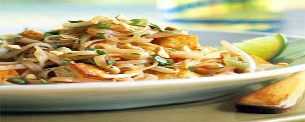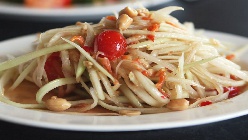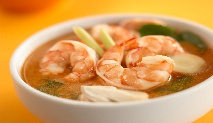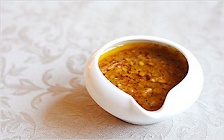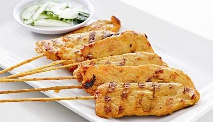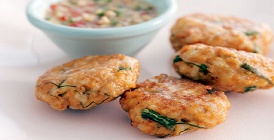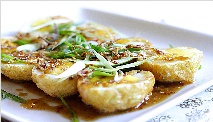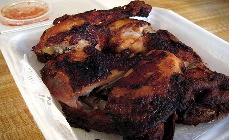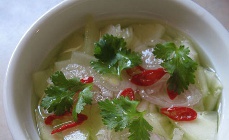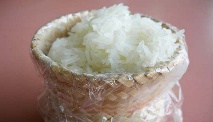



































































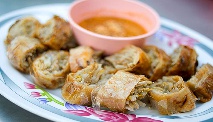








































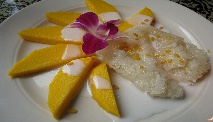
















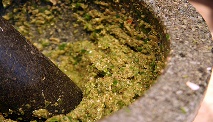
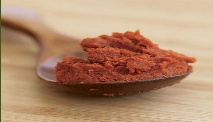
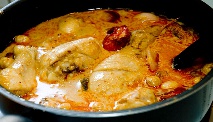
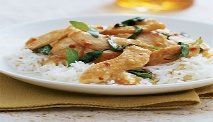
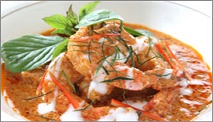
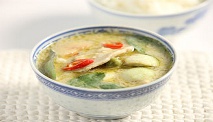
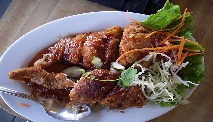
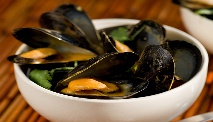
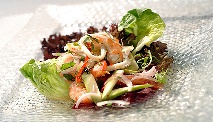
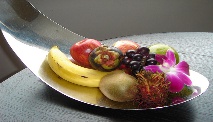
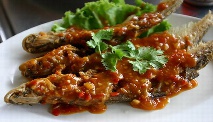
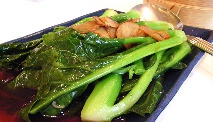
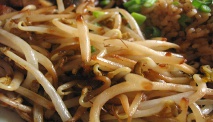
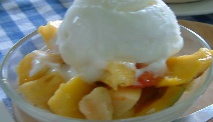
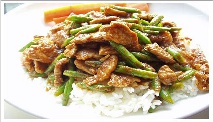
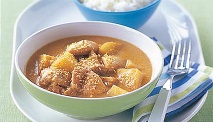




















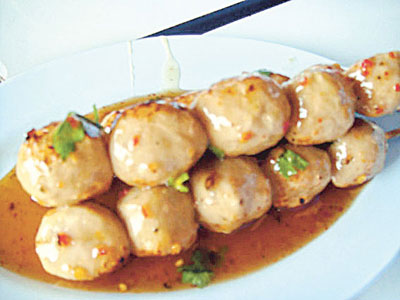
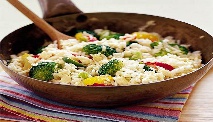
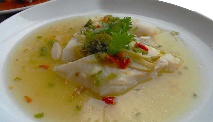
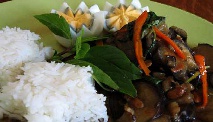
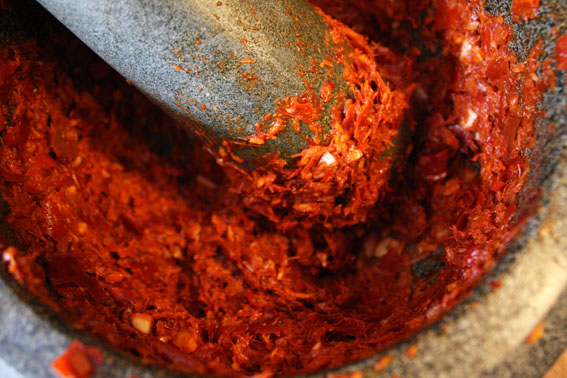

"Exotic" perfectly describes Thailand, once
known as Siam. As the only Southeast Asian
country never to have been
colonized by the west, Thailand has always had an enchanting, mysterious aura. Although culturally influenced by both
China and India and surrounded neighbours such as Laos, Vietnam, and Cambodia.
It is not surprising that the Thais are passionate about food: With long growing seasons and a stable environment, the
country yield an abundance of marvelous ingredients for the kitchen. Its vast, fertile plains in the north invite massive
cultivation of rice, the most important element in the Thai diet. Miles of coastline on both the Indian ocean and the Gulf
of Thailand provide an endless variety of seafood and shellfish. Thailand is also blessed with wealth of fruits, many of
which - rambutans, durians, and mangosteens for example are almost unknown in the west today.
What is the cooking of Thailand? With a healthy pinch of Chinese influence in the preparation of certain foods, and a
generous dash of Indian influence in the use of spices and the making of curries, Thai food is uniquely its own. It is two minds: It can be sweet and soothing, or hot and spicy almost beyond imagination.
colonized by the west, Thailand has always had an enchanting, mysterious aura. Although culturally influenced by both
China and India and surrounded neighbours such as Laos, Vietnam, and Cambodia.
It is not surprising that the Thais are passionate about food: With long growing seasons and a stable environment, the
country yield an abundance of marvelous ingredients for the kitchen. Its vast, fertile plains in the north invite massive
cultivation of rice, the most important element in the Thai diet. Miles of coastline on both the Indian ocean and the Gulf
of Thailand provide an endless variety of seafood and shellfish. Thailand is also blessed with wealth of fruits, many of
which - rambutans, durians, and mangosteens for example are almost unknown in the west today.
What is the cooking of Thailand? With a healthy pinch of Chinese influence in the preparation of certain foods, and a
generous dash of Indian influence in the use of spices and the making of curries, Thai food is uniquely its own. It is two minds: It can be sweet and soothing, or hot and spicy almost beyond imagination.
As in Chinese cooking, it has a subtle balance
of sweet, salty, and sour flavours that creates
harmony through contrast, completeness
through the sum of the dissimilar parts. And
it always employs the freshest ingredients,
whether they are bought at Bangkok's
unique floating market or at a local farmers
market.
The Thai cuisine includes several important ingredients: nam pla or fish sauce, which lends saltiness to a dish; fresh chili peppers; and herbs, among them the fragrant lemongrass, coriander root, galangal, and tamarind pulp, which when soaked gives forth an assertive sour juice. Spicy pastes figure importantly in the cooking of Thailand. Among the most popular are red curry paste based on dried chili peppers, green curry paste, potent with fresh green chilis; and Masaman curry paste, with dried red chili peppers and a host of spices from Indian spice routes.
The Thai cuisine includes several important ingredients: nam pla or fish sauce, which lends saltiness to a dish; fresh chili peppers; and herbs, among them the fragrant lemongrass, coriander root, galangal, and tamarind pulp, which when soaked gives forth an assertive sour juice. Spicy pastes figure importantly in the cooking of Thailand. Among the most popular are red curry paste based on dried chili peppers, green curry paste, potent with fresh green chilis; and Masaman curry paste, with dried red chili peppers and a host of spices from Indian spice routes.
Coconut milk is a staple in Thailand,
serving as the base of sauces, soups,
vegetable dishes, and desserts. Seafood
is the favorite main dish, but when it is
not available (as in inland areas),
chicken, pork, and beef are popular
alternatives.
The sampling of recipes in this page, from
all-important pastes to snacks, soups,
vegetables, and desserts, showcases Thai
food as it would be prepared and served
throughout Thailand. We suggest that you
use chilis judiciously in any dish you are
making for the first time; you can always
increase the heat quotient, but once added
to a dish, the power of a chili cannot be
removed.
A fork and a spoon are the only utensils used on a Thai table, the Thai people believe that the food should be so expertly cut in preparation that a knife will not be needed. This aesthetic, along with exquisitely carved fruits and vegetables for garnish, displays, and delicate attributes of the Thai spirit and helps to explain why Thai cooking has become a celebrated, world-class cuisine. Its superb and unusual tastes and delicate complexities endure far beyond the close of any meal.
A fork and a spoon are the only utensils used on a Thai table, the Thai people believe that the food should be so expertly cut in preparation that a knife will not be needed. This aesthetic, along with exquisitely carved fruits and vegetables for garnish, displays, and delicate attributes of the Thai spirit and helps to explain why Thai cooking has become a celebrated, world-class cuisine. Its superb and unusual tastes and delicate complexities endure far beyond the close of any meal.
Bon Appetit !
Although pastes and sauces are usually
mere accompanies to a dish, all Thais would
agree that these four - green curry paste, red
curry paste, panaeng curry paste, and
masaman curry paste are quintessential
components in flavouring. Other ingrdients
may add to the overall taste of a dish, but
the paste is the keystone.
Contact
Live chat
Search









